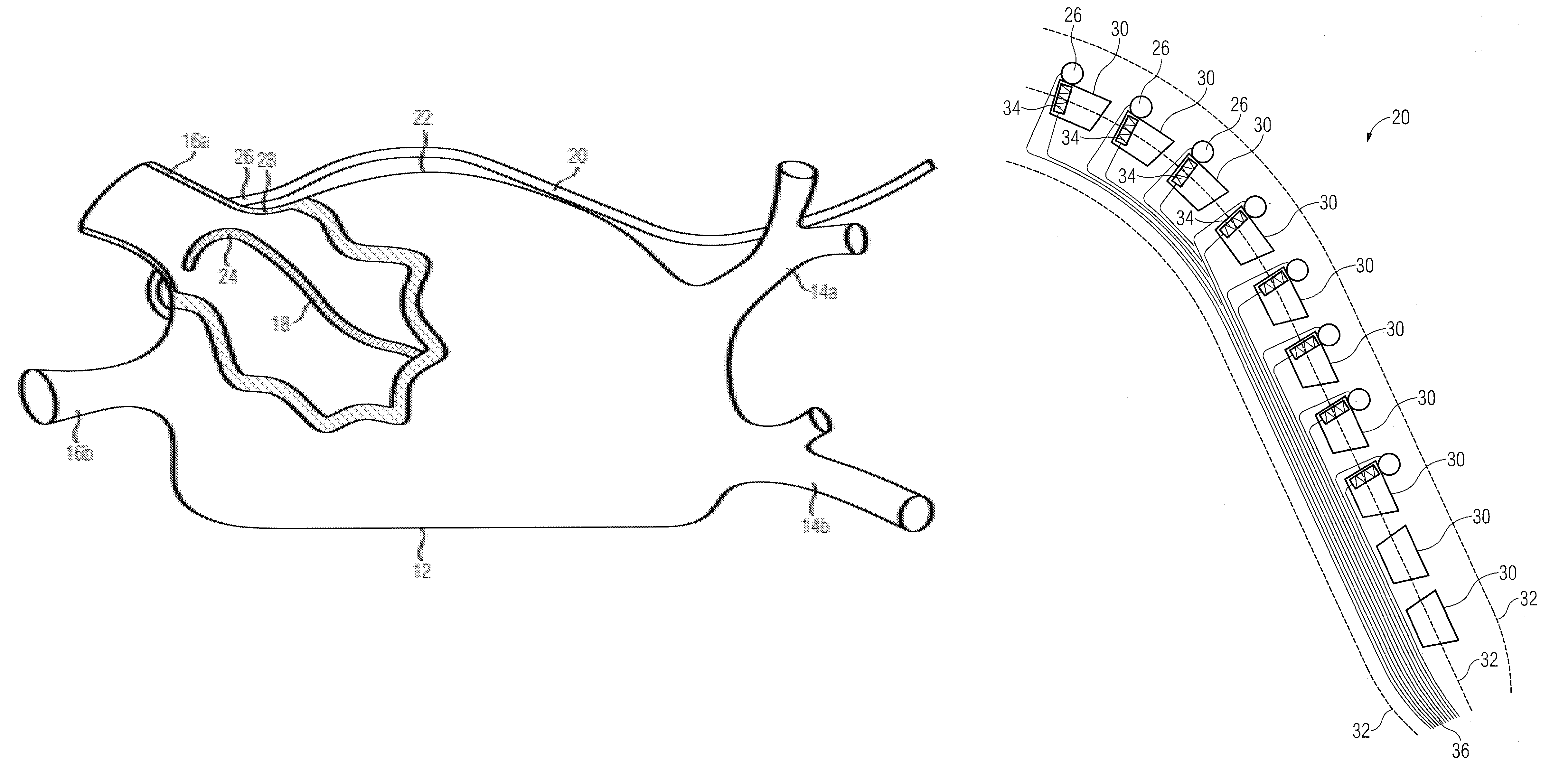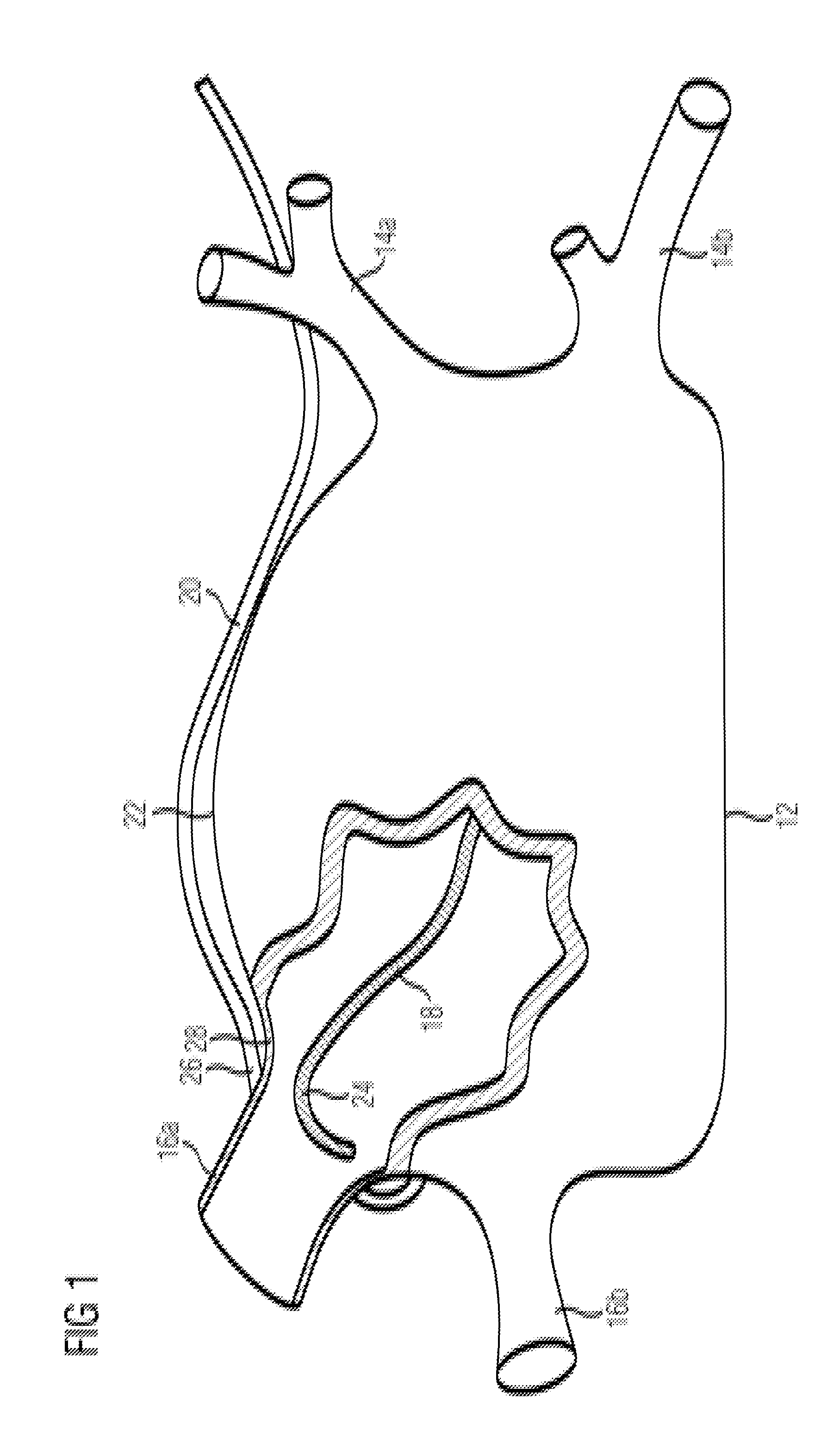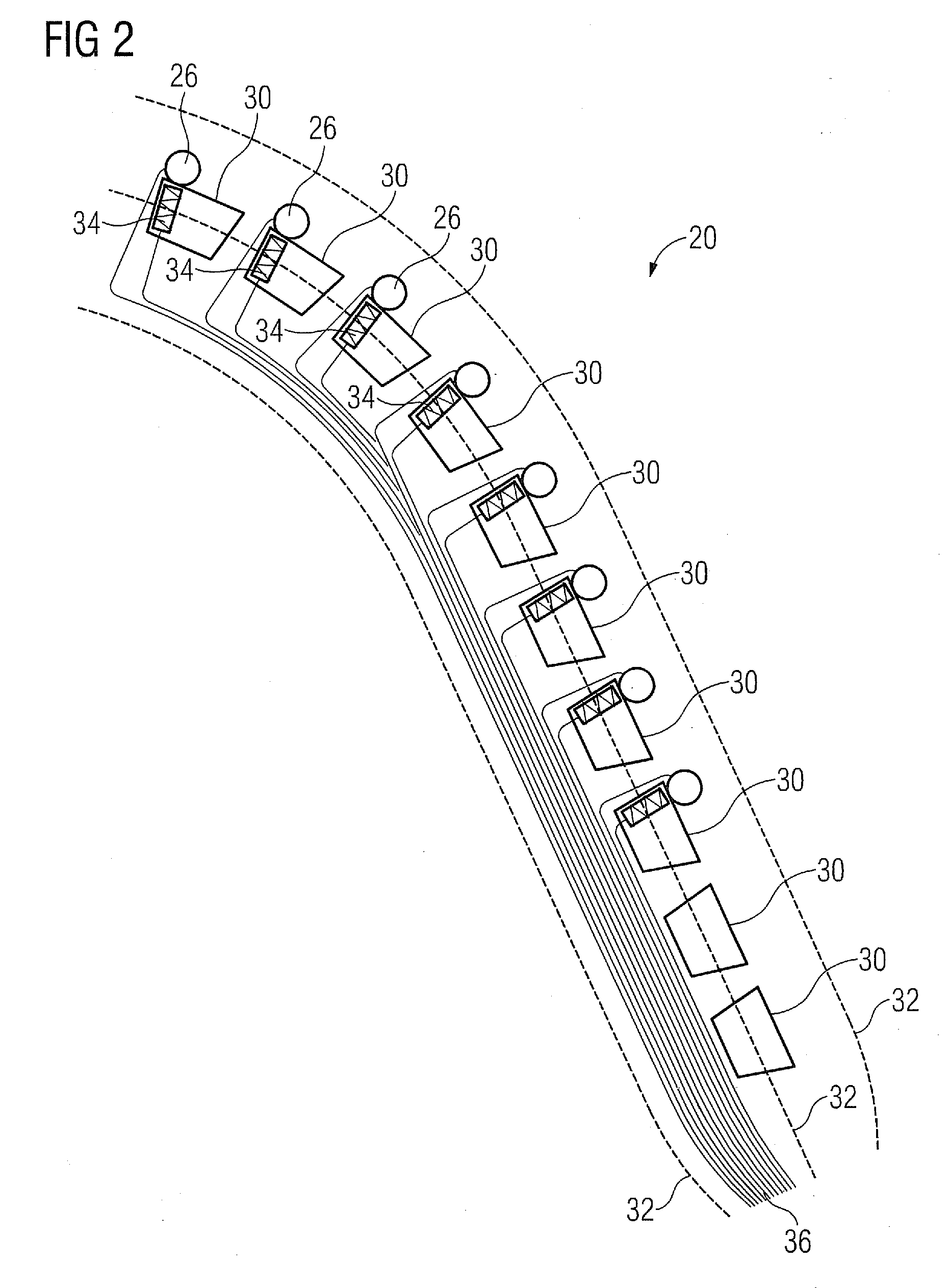Pair of endocardial and epicardial catheters, catheter and method for positioning electrodes on a cardiac wall and method for the ablation of cardiac muscle tissue
a technology of epicardial catheter and endocardial catheter, which is applied in the field of cardiac muscle tissue ablation, can solve the problems of inaccurate target hitting and damage to surrounding tissue, and achieve the effect of improving the accuracy of target hitting
- Summary
- Abstract
- Description
- Claims
- Application Information
AI Technical Summary
Benefits of technology
Problems solved by technology
Method used
Image
Examples
Embodiment Construction
[0028]During an ablation process, tissue is to be destroyed (ablated) locally from the left atrium of a heart. Depicted in addition to the mitral valve 12 are the right upper pulmonary vein 14a, the right lower pulmonary vein 14b, the left upper pulmonary vein 16a and the left lower pulmonary vein 16b. Hereby, the left upper pulmonary vein 16a is shown as cut open. An endocardial catheter 18 is introduced into the atrium. A further catheter 20 is simultaneously introduced into the patient's body, in the present case said catheter lies on the surface 22 of the atrium and hence of the myocardium. For the ablation, an electrode 24 on the endocardial catheter 18 must be brought into the adjacency of an electrode 26 on the epicardial catheter 20. To this end, an electromagnet (not shown in FIG. 1) is arranged in the region of the electrode 24 and a permanent magnet is arranged in the region of the electrode 26. Upon excitation of the electromagnet 24, the electromagnet attracts the perma...
PUM
 Login to View More
Login to View More Abstract
Description
Claims
Application Information
 Login to View More
Login to View More - R&D
- Intellectual Property
- Life Sciences
- Materials
- Tech Scout
- Unparalleled Data Quality
- Higher Quality Content
- 60% Fewer Hallucinations
Browse by: Latest US Patents, China's latest patents, Technical Efficacy Thesaurus, Application Domain, Technology Topic, Popular Technical Reports.
© 2025 PatSnap. All rights reserved.Legal|Privacy policy|Modern Slavery Act Transparency Statement|Sitemap|About US| Contact US: help@patsnap.com



